The first T cell response to transmitted/founder virus contributes to the control of acute viremia in HIV-1 infection
- PMID: 19487423
- PMCID: PMC2715063
- DOI: 10.1084/jem.20090365
The first T cell response to transmitted/founder virus contributes to the control of acute viremia in HIV-1 infection
Abstract
Identification of the transmitted/founder virus makes possible, for the first time, a genome-wide analysis of host immune responses against the infecting HIV-1 proteome. A complete dissection was made of the primary HIV-1-specific T cell response induced in three acutely infected patients. Cellular assays, together with new algorithms which identify sites of positive selection in the virus genome, showed that primary HIV-1-specific T cells rapidly select escape mutations concurrent with falling virus load in acute infection. Kinetic analysis and mathematical modeling of virus immune escape showed that the contribution of CD8 T cell-mediated killing of productively infected cells was earlier and much greater than previously recognized and that it contributed to the initial decline of plasma virus in acute infection. After virus escape, these first T cell responses often rapidly waned, leaving or being succeeded by T cell responses to epitopes which escaped more slowly or were invariant. These latter responses are likely to be important in maintaining the already established virus set point. In addition to mutations selected by T cells, there were other selected regions that accrued mutations more gradually but were not associated with a T cell response. These included clusters of mutations in envelope that were targeted by NAbs, a few isolated sites that reverted to the consensus sequence, and bystander mutations in linkage with T cell-driven escape.
Figures
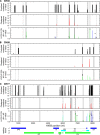


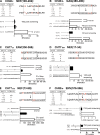
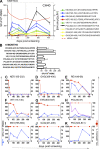
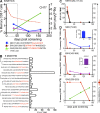
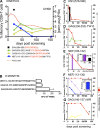

References
-
- Gasper-Smith N., Crossman D.M., Whitesides J.F., Mensali N., Ottinger J.S., Plonk S.G., Moody M.A., Ferrari G., Weinhold K.J., Miller S.E., et al. 2008. Induction of plasma (TRAIL), TNFR-2, Fas ligand, and plasma microparticles after human immunodeficiency virus type 1 (HIV-1) transmission: implications for HIV-1 vaccine design.J. Virol. 82:7700–7710 - PMC - PubMed
-
- Fiebig E.W., Wright D.J., Rawal B.D., Garrett P.E., Schumacher R.T., Peddada L., Heldebrant C., Smith R., Conrad A., Kleinman S.H., Busch M.P. 2003. Dynamics of HIV viremia and antibody seroconversion in plasma donors: implications for diagnosis and staging of primary HIV infection.AIDS. 17:1871–1879 - PubMed
-
- Ho D.D. 1996. Viral counts count in HIV infection.Science. 272:1124–1125 - PubMed
Publication types
MeSH terms
Substances
Grants and funding
LinkOut - more resources
Full Text Sources
Other Literature Sources
Medical
Research Materials

